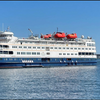Competence is a crucial factor in the shipping business. Through its SeaSkill certification services DNV GL helps owners and operators, maritime training providers and test centres to advance crew training and ensure the highest levels of safety on board.
The most sophisticated technologies are of limited use if not operated by people who command the appropriate skills. As maritime technology advances so do the demands on crews.
Complex on-board systems, shorter turnover times in ports and the ambition to operate vessels as efficiently as possible, requires highly skilled seafarers.
“Enhancing crew competence and establishing a strong safety culture is a key concern for many operators in the maritime and offshore sectors. Competence management is therefore at the heart of the SeaSkill programme,” says Nils Gunnar Bøe, Head of SeaSkill and Area Manager Norway East, Mid & North at DNV GL.
Seafarer training is subject to the rules of the IMO “Convention on Standards of Training Certification and Watchkeeping for Seafarers“ (STCW). The amended 2012 version of the STCW sets forth new standards and requires all seafarers to be certified accordingly by 2017.
DNV GL SeaSkill certification to applicable national or international standards is available for maritime training providers, learning programmes and test centres, simulators used for training and qualification, assessment centres and competence management systems.
Numerous companies have embraced the DNV GL SeaSkill standards and activities as a reference or source for their own activities, or use voluntary SeaSkill certification to verify the quality of their maritime-training-related products and processes. For example, over 200 DP operator certificates have been issued based on SeaSkill certification.















